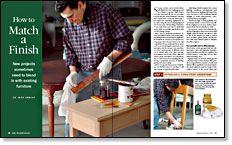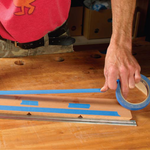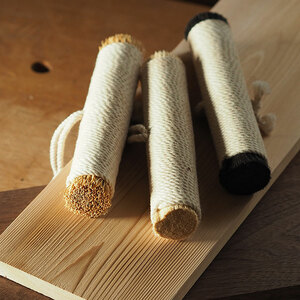How to Match a Finish
New projects sometimes need to blend in with existing furniture
Synopsis: Staining doesn’t have to be complicated. Jeff Jewitt explains how you can build color in different ways. He advises matching a finish in four steps: establish a consistent undertone, adjust the color with a darker stain and seal it in, tweak the overall color with a glaze, and then match the sheen with a topcoat. He explains how to make a stain board from scraps so you can tinker with color until you achieve a match.
Sooner or later, most woodworkers will likely face the challenge posed by a client or a spouse: “Well, I know it’s pretty wood and all, but can you make it match the rest of the furniture?” The first time I heard those words my heart sank. I had made two matching nightstands for my wife using the most stunning figured ash I’d ever seen. The last thing I wanted to do was stain them, but I had to admit that pearly white wood didn’t exactly fit in with our decorating scheme.
Many factory finishing operations involve specialized stains (such as sap stains, equalizing stains and pad stains) applied to the furniture in as many as six separate coloring steps. But it doesn’t have to be that complicated. If you understand how stains work on wood and apply some basic color principles, the job can go a lot smoother. You don’t need dozens of different stain colors. Armed with a few dyes and pigment stains in wood-tone colors—plus red, yellow, green and black—you should be able to match just about anything by following a systematic process of staining, glazing and clear coating.
Before we get into the process of matching one finished piece to another, it will help to keep in mind the following:
- Matching a finish requires the correct lighting conditions. Incandescent and some fluorescent lighting will distort the color. It’s best to work in diffused natural daylight or under full-spectrum, colorcorrected fluorescent lights.
- Work from light to dark gradually. You can always darken a color, but it’s very difficult to lighten wood tones under a transparent finish that are already too dark.
- It’s easiest to match colors when the finish has a high-gloss sheen. Most colors shift slightly when the finish over them is satin or flat. If the sample you want to match does not have a glossy sheen, wet the surface with some mineral spirits to simulate the effect of gloss.
You can build color in different ways
Wood stains can be grouped into two distinct types—dyes and pigments. Manufacturers sometimes mix the two together, but I find it easier to work with one at a time when matching color.
Pigment stains use an inert, finely ground colored powder as the colorant. This powder is suspended in a mixture of resin and thinner. When applied to wood and wiped, the small pigment particles lodge in the surface texture of the wood.
From Fine Woodworking #148
For the full article, download the PDF below:
Fine Woodworking Recommended Products

Veritas Micro-Adjust Wheel Marking Gauge

Osmo Polyx-Oil

3M Blue Tape






















Log in or create an account to post a comment.
Sign up Log in